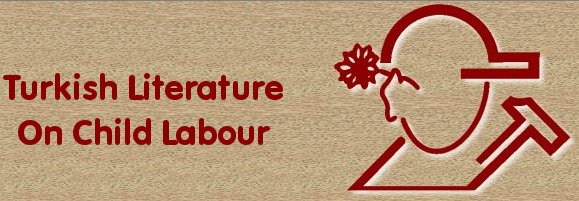Gürçay, C.; Kumaş, H.(2001); ‘‘Profile of Employed Children in the World and in Turkey’’, (In: Seminar on Working Children in Turkey), DIE Publications, Ankara, 2001.
Number of Works Cited: 31
Scope:
The study creates a profile aimed at working children after giving information about the quality and quantity of working children in the world and in Turkey. After the Introductory section, the study discusses children employed on contract. The reasons for child employment have been argued and a panoramic look has been put on children employed in the world. Then the focus is turned to the children employed in Turkey and to their ages and job sectors. The study employs the child labour survey data of DIE for the years 1994 and 1999.
An Excerpt from the Article:
One of the points of the problem is that the rules aimed at the working life in the international dimension have been created in a manner encompassing all nations. Difference of development levels and internal dynamics of nations make arrangements considering local conditions necessary. And this puts into the agenda the working life practices much lower than international arrangements and light and heavy works classification and efforts to address the issue in the legal dimension.
Some Keywords:
minimum age, working children, child labour survey, international regulation
Çiner, C.U.(2002); ‘‘A Future Without Child Labour’’, Çalışma Ortamı Magazine, Issue No. 63, July-August.
Number of Works Cited: 1
Scope:
The issue of child labour in the world has been compiled in consideration of a working report of ILO. Size, causes and results of the issue are discussed.
An Excerpt from the Article:
Child labour has been described as a phenomenon that has many various forms. Based on available data, it has been concluded that 352 million children aged between 5 and 14 were in an activity with economic gains. From here, it is seen that 106 million children in the minimum working age are working in an acceptable job. Working conditions of remaining 246 million children need improvement. (p.16)
Some Keywords:
minimum age, working conditions, child workers
Tezgider, G.(1979); “The State Of Children In The Professional Life”, Çalışma Dergisi, Magazine January-April, p. 57-66.
Number of Works Cited: –
Scope:
In the article the differences in income distribution and the places where children work are discussed. The constitutional side of child labour is explained and the ruthless exploitation of children in labour markets and the destruction of physical, menthal and ethical development of children is emphasised. Also the working children are far away from school, social security and social protection. And it is also discussed if the student status given to apprentices helps the exploitation or not. Also the trade union membership and activities of apprentices are restricted.
An Excerpt from the Article:
Everday the need for determining the minimum age for working, the cutting of work hours and strengthening the law sanctions is discussed. But even these insufficient laws are not applied in practice. We can say that the laws which are violated the most are the ones concerning the protection against child labour. The children are forced to work for more than 8 hours and their health examinations are never done. Even if the sanctions of laws are ineffect there is not much to do as the employer has to pay 1500 liras if violated the laws. Child health is that cheap. (p.62)
Some Key Words:
minimum age, apprenticeship, child development, reasons of child labour, child health, trade unions, social security, national regulation
Karabulut, Ö.(1998); “The Problems Of Working Children And Their Ways Of Solution”, Third National Occupational Health Congress, TTB Central Council, October, Ankara, p. 354-357.
Number of Works Cited: –
Scope:
The study defines the entrance of children into labour markets as a social problem, and finds the efforts of trying to acquire cheaper labour for the purpose of better competition very dangerous. Poverty, the low level of success in education system and the fact that it does not provide better future solutions creates an environment where child labour demand increases. The potential that children have in terms of gaining skills which was unutilised because of use of child labour which is often considered as results of exploitation and neglegence dangers the efforts of development of our country with highly skilled labour force. Compulsory 8 year education and the ratification of minimum age convention is not enough. The educational life should be more attractive and all the working children should be able to benefit from a broad protection. The presentation ended with Türk-İş’s contributions to fight against child labour.
An Excerpt from the Article:
Exploitation of children in the form of child labour is seen as the most spread form of child abuse. The employment of children whom are the source of our future in hard and dangerous conditions in their development and education period makes them become the victim of the implementation of socio- economic policies, all kinds of neglegence and poor control. (p.355)
Some Key Words:
minimum age, child workers, child abuse, TÜRK-İŞ
